- Aida Greenbury is the former Chief Sustainability Officer at Asia Pulp & Paper, a forestry giant with extensive operations in Indonesia.
- Greenbury was the lead internal architect for APP’s 2013 forest conservation policy, which is today one of the most ambitious zero deforestation commitments in the plantation sector.
- Greenbury left APP in May and is today working on collaborative initiatives to protect and restore ecosystems.
Perhaps no forestry company operating in Indonesia was more controversial from the late 1990s to the early 2010s in environmental circles than Asia Pulp & Paper (APP). Throughout that period, the pulp giant was widely criticized by green groups and human rights NGOs for its destruction of over a million hectares of native Indonesian forests and its ongoing conflicts with local communities. APP garnered particular scorn for breaking promises to clean up its operations, including reneging on high-profile sustainability agreements with the World Wildlife Fund (WWF) and the Rainforest Alliance and losing its Forest Stewardship Council (FSC) certification. Those continued transgressions provided ammunition for campaigners, which made the APP brand increasingly toxic and cost it tens of millions of dollars in lost business.
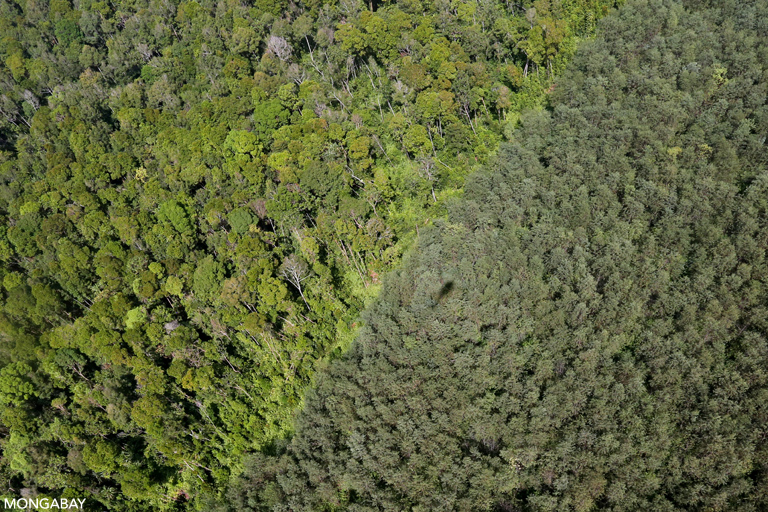
Amid customer defections and intense campaigns by NGOs, in February 2013 APP adopted a comprehensive forest conservation policy, which established protocols for addressing social conflict and barred it from sourcing fiber from suppliers who clear forests and peatlands. Critically, the policy applied to all of APP’s current and future suppliers across its entire Indonesian supply chain, meaning it couldn’t outsource forest destruction to third party suppliers. In response to the policy, Greenpeace — arguably APP’s most damaging critic until that point — suspended its campaign.
Within APP, the chief architect behind the 2013 deal was Aida Greenbury, the company’s Managing Director of Sustainability. Greenbury, who first joined APP as a general manager of sustainability in 2004, worked with The Forest Trust and Greenpeace to develop a policy that would be both acceptable to APP’s shareholders, management, and staff and viewed as credible to the company’s outside critics, a tall order given the level of animosity between the various parties, including skeptical NGOs. Transformation in any large company is not easy and requires time.

Internally, Greenbury was viewed as the evangelist for sustainability and the enforcer of the forest conservation policy, a position that required her to sometimes take on tough fights to ensure APP’s myriad suppliers — some of whom would have been content to proceed on a business-as-usual course — were complying with the commitment. Externally, Greenbury became one of APP’s most public faces, regularly representing the company at events ranging from U.N. conferences to forestry industry meetings to the World Economic Forum in Davos. Over time, APP’s forest conservation policy came to be seen as one of the strongest No Deforestation, No Peat, No Exploitation (NPDE) pledges globally. Customers who dropped the company began to return.
Thus when the news broke in May that Greenbury was leaving APP*, many observers were caught by surprise. But Greenbury says that after more than a decade of building APP’s sustainability strategy “almost from scratch”, she felt it was time to move on addressing issues bigger than a single company’s supply chain.
“I was with APP for over a decade — that’s 70 percent of my whole career life to date,” Greenbury told Mongabay in a July 2017 interview. “I have provided almost every bit of knowledge I have about forestry, pulp, paper and sustainability to the company and embedded that knowledge into its team. Now its sustainability team is strong and global. It’s time for me to move on, to share my knowledge and expertise more widely, to continue the fight in different ways, to innovate and deal with greater challenges.”
Dismayed by ongoing degradation and destruction of natural systems, Greenbury wants to transform how landscapes are managed by convincing companies and governments to incorporate natural capital into their financial decision-making. Doing so will require long-term vision, new types of collaborations between parties that have traditionally been adversarial, and a plan to actively rehabilitate and restore damaged ecosystems.
“Although a lot of people disagree or do not understand, at the end of the day saving forests is about money. It’s about business. And if you want businesses to support forest protection, you need to start talking about business risks or natural capital values,” Greenbury said. “Deforestation does not only destroy biodiversity; it destroys all the other values in the landscape as well such as water quality and quantity, and stored carbon. That in turn will destroy benefits relevant to any investment in the landscape, relevant to taxes and the income of the country. In reverse, halting deforestation, if designed properly, will maintain and increase these benefits.”
“Due to the current social and economic situation in Indonesia, and the sheer number of people that rely on these landscapes, we must ensure this forest and peatland remains profitable by, in example, implementing a ‘protection, production and livelihood’ concept. We must make forest and peatland protection a profitable business for the people’s welfare.”
In her interview with Mongabay, Greenbury discussed her ambitious vision for shifting business-as-usual in Indonesia and beyond, including saving and restoring the planet’s vanishing wild places.

AN INTERVIEW WITH AIDA GREENBURY
Rhett Butler for Mongabay: What originally inspired you to choose forestry as your profession?
Aida Greenbury: It all started with my father. I didn’t know much about him as a toddler – as soon as I was born he went away to study forestry at Minnesota University in the USA. For the first 5 years of my life I knew my father from the letters he sent that told us about the things he learned. At his return, the forestry industry was booming in Indonesia. My father was quickly recognized for his expertise and he travelled all over Indonesia and beyond to lend his forest management skills. When he came back home he would tell me all the stories about the jungles he visited, and the trees and animals he saw.
While other children were outside playing, for the most part I was staying at home with my father, using color pencils to help him finalize the country’s forest maps. My father was the first person to be granted professorship for forestry management by the Indonesian President. He was the dean of the forestry faculty at Gadjah Mada university for 20 years, and I later became a student studying under him. As the dean’s daughter, I felt extra pressure to succeed in my studies. He was well respected; everyone in the industry knew my father. I wanted to continue his fight for responsible forest management, but I also realized that he left very big shoes to fill.
One of the lullabies my father used to sing for me was the song ‘Hutanku Tak Akan Hilang’, which means ‘my forests will never disappear’. Today I fight to find innovative ways to contribute my forestry knowledge and make sure that old lullaby rings true.
Mongabay: You recently transitioned from managing director of sustainability at APP. Can you describe what was involved with that role in recent years?

Aida Greenbury: It has truly been a pleasure to be able to work for APP for more than 13 years. The years I spent with the company were some of the most colorful years of my life; I found friends and family while working there, which made leaving APP a very hard decision for me. When I started my career at APP I was a general manager of sustainability, back in 2004. It was a challenge, especially for an Indonesian woman in a male dominated industry. I initially tackled the most basic issues such as material traceability, transparency, and developing baselines for environmental and social foot-printing. They were basic, but even those simple elements were crucial components of the strong foundation atop which APP declared their Forest Conservation Policy (FCP) in February 2013. It was a great moment, a victory for all of us. My career at APP was undoubtedly rewarding, but at the same time, it was a roller coaster of a journey. I had to reach out and face the unexpected, such as by embracing our harshest critic, Greenpeace. We had to transform rapidly to being transparent and open about our plans and performance. APP was the first pulp and paper company to come out with a zero-deforestation commitment with the FCP, so no one really knew how it would work. At times, it felt like I was jumping off a cliff and only growing my wings on the way down.
Mongabay: Did you face much resistance within APP in trying to drive sustainability? If so, did this change over time and how did you overcome it?
Aida Greenbury: It was difficult to introduce the implementation of the zero-deforestation policy to any of the stakeholders because it was uncharted territory, and we went in without any blueprints in hand. The key approaches to overcome those issues were to be persistent, patient, innovative and to repeat the message over and over again.
Mongabay: What would you say were your biggest achievements while at APP?
Aida Greenbury: My greatest achievements in the previous company I worked for were definitely centered around our innovations. How we challenged the industry; from human rights audits and environmental and social foot-printing, through to establishing a visionary sustainability roadmap. There were even more opportunities for innovations in the challenges that I faced after the implementation of the zero-deforestation policy because then I couldn’t limit myself to the company and its supply chain anymore; I had to start looking at things at the landscape level. It opened me up to more innovative thinking such as jurisdictional approaches, connecting the green and blue carbon, and natural capital valuation. But for me my biggest achievement was definitely ensuring that we became the catalysts for the zero-deforestation movement, and how it pushed us all to think outside the box, move away from ‘business as usual’, and innovate.
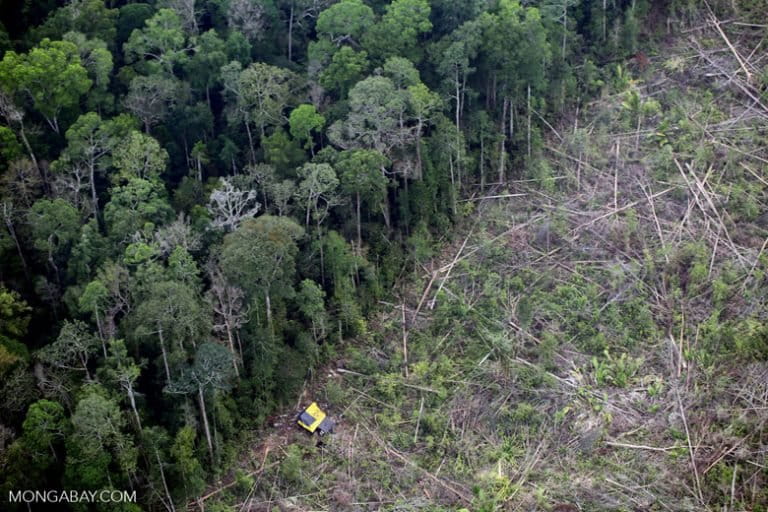
Mongabay: How do you respond to critics who say companies — whether APP in Indonesia or Cargill in the Brazilian Amazon — have used sustainability commitments to facilitate the development of infrastructure (mills, roads, ports, channelization projects) that effectively lock-in long-term demand for raw materials?
Aida Greenbury: Locking in long term demand for raw materials is not an issue. Businesses always want to maximize their profits and have certainty of a long term raw material supply to effectively use up their production capacity and enable them to fulfill the market requirements. The issue is, what raw materials will be used? The challenges being faced by many natural resource-based companies revolve around three things: one, they need to establish a very robust system so only responsible raw materials can enter their supply chain; two, this system needs to be replicated to reach 100% of every aspect within their supply chain; three, it must include monitoring systems which support different platforms such as internal and external monitoring.
Mongabay: And now that you’ve moved on from APP, what are you working on?

Aida Greenbury: I want to contribute my skills, expertise and passion towards saving more forests, at a level greater than merely one company’s supply chain. Many forest programs don’t work because these programs have been implemented in silos. There are no clear collaborations between stakeholders, and there is not enough understanding and respect. Nelson Mandela once said: if you talk to a man in a language he understands, that goes to his head. If you talk to him in his language, that goes to his heart. Saving the forest is not easy. You need a lot of support from different type of stakeholders, and that support will not come if you don’t speak their language. To understand how you can get community support, you need speak their language and understand what the community needs to better their lives. Unfortunately, forest protection and restoration is very expensive. You need from $500 to even more than $5000 per hectare to protect and restore forests. Although a lot of people disagree or do not understand, at the end of the day saving forests is about money. It’s about business. And if you want businesses to support forest protection, you need to start talking about business risks or natural capital values. Humans derive a wide range of services from natural capital, the world’s stocks of natural assets which include geology, soil, air, water and all living things, which make human life possible (and business profitable in the long run). The UN Goodwill ambassador once said: “…there are both serious risks to business, as well as significant opportunities, associated with biodiversity loss and ecosystem degradation. There is also a need for business to quantify and value its impacts on biodiversity and ecosystems, in order to manage these risks and opportunities and enable a better future for all”. Moving forward, I want to work on these issues. I want to support my country and beyond to close these gaps that exist in forest protection initiatives, and to remove these language barriers. Forest protection could be about profitable business.
Mongabay: What do you see as the big obstacles for making progress on deforestation in Indonesia?
Aida Greenbury: Again, it’s about providing better understanding to all – the government, the businesses, the communities, and the NGOs – about the value of our natural capital. Deforestation does not only destroy biodiversity; it destroys all the other values in the landscape as well such as water quality and quantity, and stored carbon. That in turn will destroy benefits relevant to any investment in the landscape, relevant to taxes and the income of the country. In reverse, halting deforestation, if designed properly, will maintain and increase these benefits. This is why I have been supporting the high carbon stock approach (highcarbonstock.org) as the co-chair. The basis of a proper natural capital valuation must be a clear definition of what forests need to be protected.
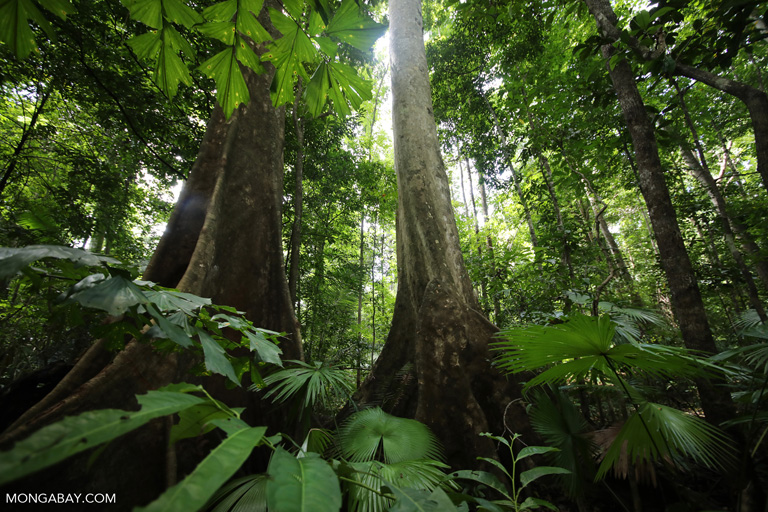
Mongabay: Some observers say that one of the biggest problems in Indonesia is the government’s focus on process over outcomes. Would you say that’s a fair assessment?
Aida Greenbury: In some cases, that might be a fair assessment. Establishing and following the right process is key in order not to have certain situations be abused by irresponsible parties. With the current situation in Indonesia, including its rates of deforestation (840,000 hectares per year according to Nature Climate Change in 2014) and social and political atmosphere, emphasized by the current global climate change condition and the set target to keep the change in global temperatures well below 2.0C, we need to do more than simply implement the right process.
I agreed with a recent statement by the Ministry of Environment of Morocco about the four-axis approach in saving the planet. In an Indonesian context, the first approach concerns data collection; to know where we stand, or the baseline establishment. We should not try to reinvent the wheel. The data in Indonesia is quite comprehensive; we can start from there. The second is to establish robust standards (including processes) to meet the target, rolling out the introduction of the standards, and capacity building. The third is the MRV system. The fourth approach is crucial. It’s about establishing a large enough or landscape level pilot program, to implement the best available practices as well as the innovations resulting from the second and third approaches. There’s a clear reason why the fourth approach is crucial – we simply cannot afford to lose any time in saving the planet, the habitats of key species, and our forests. We have passed the deadline to transform our BAU. We should not be afraid of conducting trial and error in the implementation of the pilot program, although the size and scope can be limited to mitigate risks. The trials and any errors that may occur while implementing best practices are what we need to speed up our efforts to deliver our Paris Agreement commitment. The above four approaches must be done in parallel to succeed.
Mongabay: What do NGOs need to do to become more effective agents of change in Indonesia?
Aida Greenbury: Just as businesses need to change their business as usual, so do NGOs. Their responsibilities go further than merely campaigning or criticizing; they also need to reach out and embrace the entities who are perceived to be their enemies to find real long-term solutions. In order to conserve forests in Indonesia all the players are going to have to work together and do their part.

Mongabay: What would it take to really catalyze the private sector to embrace conservation in Indonesia? For example, is criticism over haze something companies care about? Are there any concerns about degradation of ecosystem function like subsidence, flooding, and water availability? What about market-based incentives?
Aida Greenbury: It’s a combination of many factors. One factor, which I already mentioned previously, is understanding natural capital values for the benefit of businesses while removing the risks for their sustainability. The second factor, which is also crucial, is for there to be incentives, and penalties, from both the government and the market. These conservation and sustainability values need to be translated into monetary value and incorporated into accounting systems both by businesses and by the government.
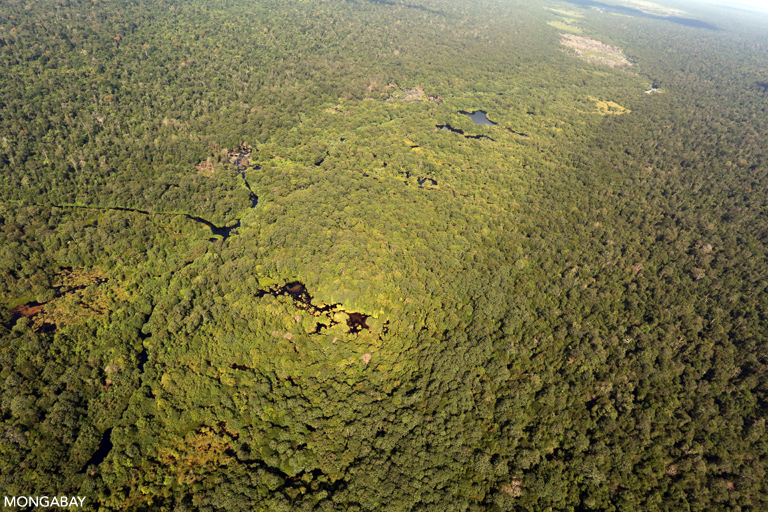
Mongabay: What are the other big opportunities for forest and peatland protection?
Aida Greenbury: A recent study places Indonesia, the Democratic Republic of Congo (DRC) and the Republic of Congo (RoC) as the most important countries in the world for tropical peat carbon stocks. It has been estimated that 30 gigatonnes of carbon is stored in the Congo basin. And 68.5 gigatonnes of carbon is stored in tropical peatland in Southeast Asia (van der Meer, 2010). However, the peatland in Indonesia in particular has suffered damage or loss, primarily due to infrastructure development, forest fires or drainage for agricultural use.
Now it is the crucial time for us to design a proper long-term roadmap for forest and peatland protection. A collective Zero Deforestation declaration by 2020 is not enough anymore. Deforestation must stop now, and it’s time to build the roadmap for forest and peatland protection, restoration and rewilding. Designing and building this roadmap is not easy as this is uncharted territory for many. In Indonesia, for example, peatland draining has been happening perhaps for centuries, since the Dutch colonized Indonesia. How can we reverse this?
Due to the current social and economic situation in Indonesia, and the sheer number of people that rely on these landscapes, we must ensure this forest and peatland remains profitable. We must make forest and peatland protection a profitable business for the people’s welfare. Other than conventional ecotourism, what other innovative approaches are there? I’m a huge supporter of research on alternative species, paludiculture and the reintroduction of microbes and mycorrhiza to revive the soil and peat. However, this research is undertaken over the course of years, and to use the results for commercial purposes the trials for commercial scale must be undertaken in advance, otherwise there is simply too much risk. The roadmap must cover all of this, so we are talking about a roadmap covering at least the next 25 years. It’s a massive opportunity, but also a huge and challenging project.

Mongabay: What role does forest and peatland mapping and monitoring play in all this?
Mongabay: Forest and peatland mapping and monitoring play a very crucial role. First, we must define what forests are and where the forests and peatland are located in order to be able to monitor their protection, any land-use change, or restoration, as close to real time as possible. The challenges are that we need a larger scale implementation of high resolution forest identification and peatland mapping. We need the technology and incentives to make this identification and monitoring exercise as cheap and as user friendly as possible. And we need it soon.
Mongabay: What’s your overall outlook for forests in Indonesia going out 20 or 30 years?
Aida Greenbury: The biodiversity, conservation values, carbon, peatland and community mapping and monitoring are the foundation of the roadmap to support proper planning to create stabilized land use, with the end goal of achieving a low carbon economy and green growth. Once we have this long-term roadmap finalized and implemented, once we have the financial mechanisms for forest protection while supporting community welfare in place, then I have hope that in 20 or 30 years Indonesia’s forests will remain and be better managed.
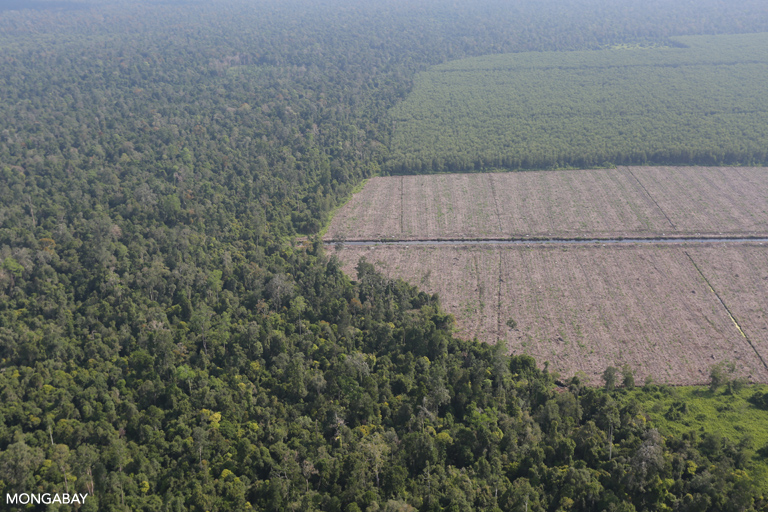
Peatlands regulation and governance
Mongabay: GAPKI and APHI recently filed a lawsuit with the Constitutional Court so that farmers with “local knowledge” would no longer be allowed to use fire to clear small plots of land. Do you think the exemption should be scrapped?
Mongabay: I really think that a proper stakeholder consultation needs to be done. We need to talk to these farmers and the local community directly and listen to what they really need, what real challenges they are facing. This issue needs a bottom-up approach. I don’t think there is enough understanding on what is really going on and what is needed by the community. Once we have a full understanding on the issues, then we can come up with a solution.
Mongabay: The lobby groups also asked the court to edit the environment and forestry laws so that companies would no longer be held strictly liable for fires that occur on their land. Do you think that’s a good idea?
Aida Greenbury: Fires have destroyed so much. Not just in Indonesia, but globally. It’s the way nature tries to tell us something is not right. It means we need to understand that we need to move away from business as usual, and that means everybody, not just businesses. Everybody must fulfil their legal obligations, that’s very clear, but fire prevention is not just about legal compliance. It’s about responsible landscape management. Every stakeholder in the landscape is responsible for the damage done in any part of the landscape because fires and hydrology destruction do not recognize administrative boundaries. There is a need for collective responsibility for fire prevention and addressing the underlying causes.
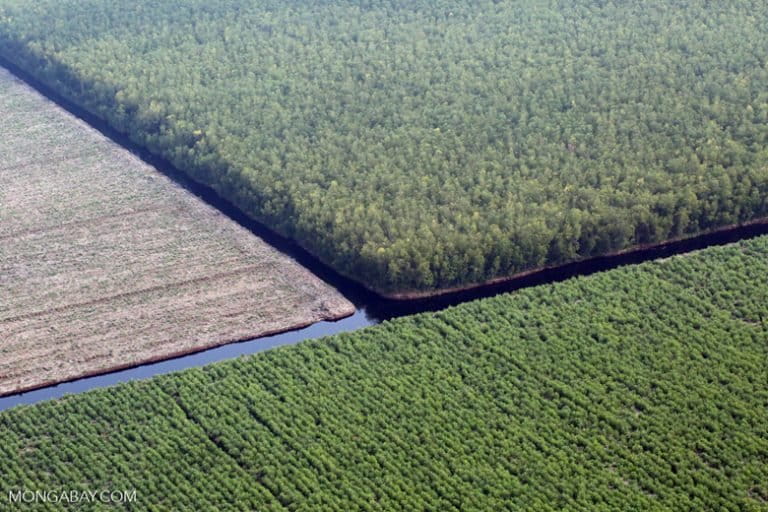
Mongabay: Lobby groups and industry ministry officials have said 2014 Peatland Protection Law should be edited so that a peatland is not considered “damaged” if the water table drops below 40 centimeters. Do you have thoughts on that?
Aida Greenbury: Peatland is a very complicated system. Peatland is not always submerged under water. It acts as a sponge that regulates the water table naturally and water level fluctuates through the seasons. If we want to prevent peatland from being damaged, we need to try to mimic the natural patterns as much as possible. Peatland’s natural behavior cannot really be measured in centimeters.
Mongabay: While the 2014 peat law requires plantation managers to maintain a water table of at least 40 centimeters, the rule is widely disregarded because the government has yet to establish a system for measuring the water table, and there is now a debate over what that system should look like. What do you think it should look like?
Aida Greenbury: This is related to forest and peatland monitoring, as I mentioned earlier. We need innovative technology that is cheap and user friendly, which can be used to monitor not just forest and peatland restoration but also water tables in peatland. We need to look at large scale radar satellite technology to be able to monitor this regularly. Climate change funding needs to be used to support crucial programs such as this.
Mongabay: APHI has called for companies whose licenses precede Jokowi’s regulation of last December to be allowed to develop peat in their concessions, because enforcing the rule will hurt business certainty. Do you agree?
Aida Greenbury: Define ‘peat development’. If it requires deforestation or uncontrollable and irresponsible drainage, then it should not be allowed. We have done enough damage to our forests and peatlands.

Mongabay: Is corruption and nepotism in the land allocation process a major driver of deforestation? How can the government rein it in and do you believe the government should be more supportive of the KPK (Indonesia’s Corruption Eradication Commission)?
Aida Greenbury: The KPK, which according to its constituting act number 30/2002 began operation in 2003 under the Megawati administration, was not truly a result of the political will of the sovereigns to combat corruption (Masduki, 2005). Politically motivated, this agency was created to rectify the poor public image of Habibi’s regime and more as a result of the international monetary fund’s recommendations (Roby Arya Brata, 2014). Lacking the political will, it was initially created as a PR façade. It doesn’t surprise me that the KPK doesn’t function as it should. Indonesia needs to truly take ownership of the KPK. Perhaps now it is time for Indonesia to review the KPK’s scope and functions, without additional external pressures, to ensure that it is truly functional and that law enforcement is implemented properly to support the agency, including a review on corruption in the natural resources sector and the nepotism eradication commission needs to be installed or not.
* Greenbury is continuing to provide advice on the more technical aspects of sustainability as one of the APP’s external consultants.
Editor’s note (July 26, 2017): We added the disclosure that Greenbury is continuing to provide advice to APP on the more technical aspects of sustainability as one of the company’s external consultants.














